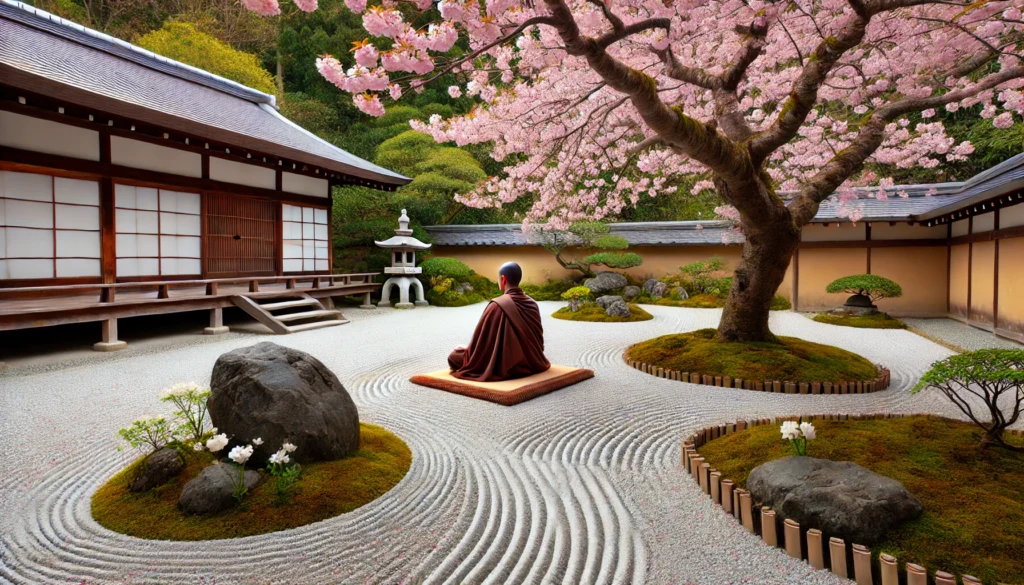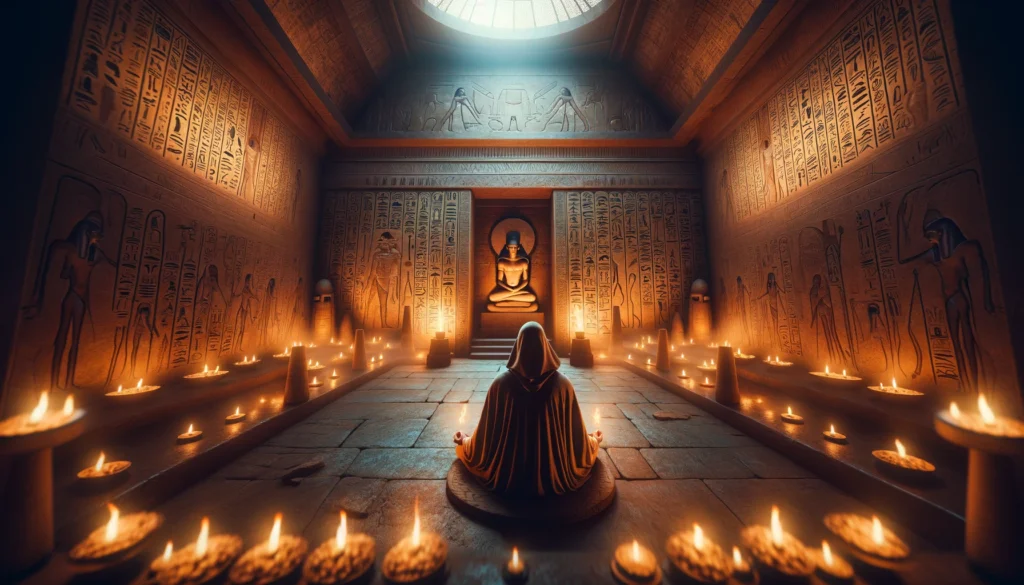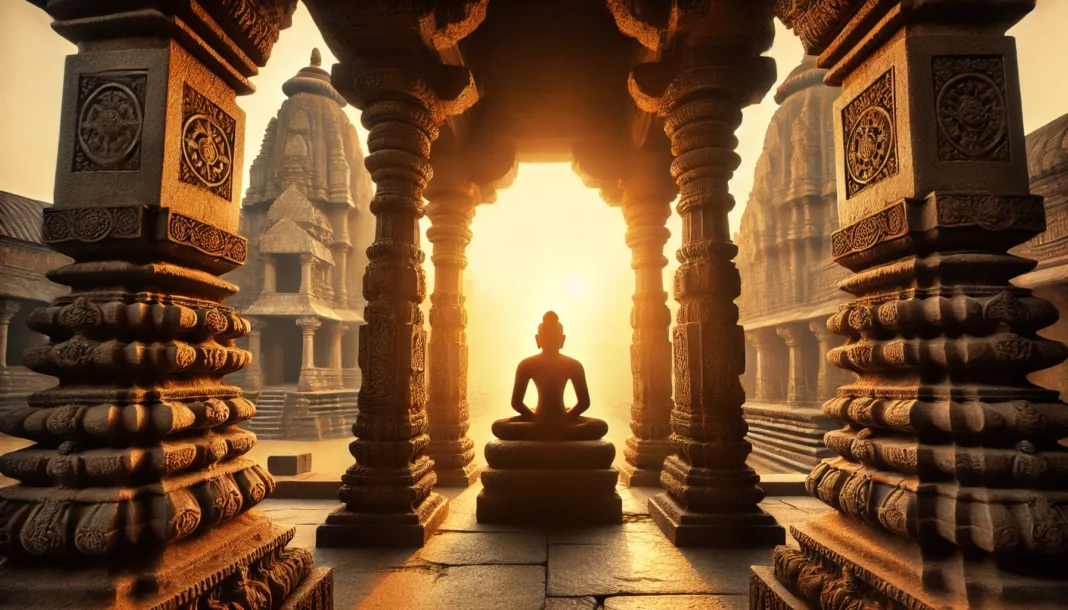Understanding the Deep Roots of Meditation
Meditation has been an integral part of human civilization for thousands of years, shaping cultures, philosophies, and spiritual practices across the world. But how old is meditation, and where did meditation originate? These questions have intrigued scholars and practitioners alike, leading to extensive research into ancient meditation methods and their evolution over time. The history of meditation is a testament to the enduring relevance of this practice, illustrating how humans have long sought mental clarity, inner peace, and transcendence through mindfulness and contemplation.
You may also like: The Science Behind Meditation: How It Transforms Mental and Physical Health
Tracing the origins of meditation requires an exploration of different cultural traditions and historical records. Ancient texts, archaeological discoveries, and oral traditions provide insight into where meditation comes from and how it has influenced civilizations from India to China, from the Middle East to the Greco-Roman world. While specific meditation techniques have evolved over time, the fundamental principles remain consistent: mindfulness, focused attention, and an awareness of the present moment. Understanding the origins of meditation allows modern practitioners to appreciate its deep-rooted significance and its capacity to enhance mental and physical well-being.
Ancient Meditation Methods in Early Civilizations
To answer the question of how long has meditation been around, one must examine its earliest recorded instances in different cultures. The origins of meditation can be traced back to the Vedic traditions of India, where the practice was deeply embedded in the spiritual and philosophical systems of Hinduism and later Buddhism. Ancient Indian scriptures, such as the Upanishads and the Bhagavad Gita, contain references to meditative techniques that emphasize self-awareness, detachment from material desires, and the pursuit of enlightenment.
Similarly, early Chinese traditions embraced meditation as a means of harmonizing the mind and body. Daoist sages practiced meditative breathing exercises and visualizations, believing that meditation could extend life, balance the flow of qi (life energy), and cultivate spiritual wisdom. Confucianism also incorporated meditative reflection as a way to enhance ethical decision-making and moral development.
In the West, the history of meditation is closely linked to Greek philosophy. Figures such as Pythagoras, Plato, and the Stoics engaged in contemplative practices that emphasized self-discipline, rational thought, and an introspective understanding of the self. The early Christian monastic tradition also embraced meditative prayer as a way to connect with the divine. These diverse cultural approaches illustrate how meditation has transcended geographical boundaries and religious affiliations, becoming a universal tool for self-improvement and enlightenment.
Who Invented Meditation? Understanding Its Evolution
The question of who invented meditation is complex, as meditation did not emerge from a single individual or moment in history. Rather, it developed organically within different cultural and spiritual traditions over millennia. While the origins of meditation in ancient India are well-documented, similar contemplative practices emerged independently in other parts of the world, demonstrating a universal human inclination toward mindfulness and inner exploration.
Buddha, one of the most influential figures in the history of meditation, played a pivotal role in formalizing meditation as a structured practice. His teachings emphasized meditation as a means to attain enlightenment, overcome suffering, and cultivate compassion. Buddhist meditation techniques, including Vipassana and Zen, spread across Asia, influencing diverse spiritual traditions and philosophical schools of thought. Meanwhile, Hindu meditation techniques, such as mantra meditation and Kundalini practices, laid the foundation for later developments in yogic traditions.
Another major figure associated with meditation is Patanjali, the author of the Yoga Sutras. His work systematized meditation within the framework of Raja Yoga, detailing the stages of meditative absorption (samadhi) and the ethical guidelines necessary for achieving higher states of consciousness. These contributions illustrate that while no single person can be credited with inventing meditation, key figures throughout history have shaped its development and integration into daily life.

The Spread of Meditation Across Cultures and Religions
As meditation spread across civilizations, different cultures adapted and refined ancient meditation methods to suit their own spiritual and philosophical contexts. The Silk Road facilitated the exchange of meditative practices between India, China, and the Middle East, leading to the synthesis of diverse traditions. In Japan, Zen Buddhism evolved into a highly disciplined meditative practice, emphasizing seated meditation (zazen) and direct experience over conceptual knowledge.
Islamic Sufism also embraced meditative techniques, such as dhikr (remembrance of God) and whirling dervish rituals, as a means of attaining spiritual ecstasy and divine connection. Meanwhile, medieval Christian mystics, including St. Teresa of Avila and St. John of the Cross, practiced deep contemplation and silent prayer to achieve union with God. These variations illustrate the adaptability of meditation across cultural and religious boundaries, underscoring its universal appeal as a method for achieving inner peace and self-realization.
How Long Has Meditation Been Around in the Modern World?
The resurgence of meditation in the modern era has been driven by scientific validation of its benefits, as well as the growing interest in Eastern spiritual traditions. While meditation has existed for thousands of years, its integration into mainstream society accelerated in the 20th century. Figures such as Swami Vivekananda, Paramahansa Yogananda, and the Dalai Lama played key roles in introducing meditation to Western audiences.
In the 1960s and 1970s, meditation gained widespread popularity in the United States and Europe, largely due to the influence of transcendental meditation (TM) and mindfulness-based practices. Pioneers like Maharishi Mahesh Yogi and Jon Kabat-Zinn contributed to the secularization of meditation, making it accessible to people of all backgrounds. Today, meditation is embraced not only as a spiritual practice but also as a scientifically supported method for stress reduction, cognitive enhancement, and emotional well-being.
The Timeless Benefits of Meditation
Regardless of where meditation comes from, its benefits remain as relevant today as they were in ancient times. Scientific research has demonstrated that meditation enhances mental clarity, reduces stress, and improves overall health. Regular meditation practice has been linked to reduced symptoms of anxiety and depression, lower blood pressure, and improved immune function.
Additionally, meditation strengthens neural pathways associated with attention and emotional regulation, making it a valuable tool for increasing focus and productivity. Corporate leaders, athletes, and healthcare professionals increasingly turn to meditation as a means of optimizing performance and managing the pressures of modern life. The continued relevance of meditation underscores its timeless value, bridging ancient wisdom with contemporary scientific understanding.

Frequently Asked Questions (FAQ): The History and Origins of Meditation
1. How old is meditation? Meditation is one of the oldest known mental and spiritual practices, dating back over 5,000 years. The history of meditation suggests that it was initially developed as a method for achieving spiritual enlightenment and mental clarity. Archaeological evidence and ancient texts indicate that meditation practices were present in early Hindu traditions as well as in other ancient cultures. How long has meditation been around? While definitive records are scarce, its origins trace back to the early Vedic traditions in India and possibly even earlier in prehistoric shamanic rituals. Over millennia, meditation evolved into various forms, influencing numerous spiritual and religious practices across the world.
2. Where did meditation originate? Meditation is believed to have originated in ancient India, particularly within Hindu and Buddhist traditions. Early references to meditation can be found in the Vedas, sacred Hindu scriptures written around 1500 BCE. However, the origins of meditation are not confined to India alone; similar practices were independently developed in China, Egypt, and Greece. Where did meditation come from historically? Many scholars suggest that contemplative practices evolved simultaneously in different regions, each with unique cultural adaptations. As a result, meditation became a global phenomenon, influencing various religious and philosophical systems.
3. Who invented meditation? Meditation was not invented by a single person but developed over time within multiple ancient cultures. The earliest structured meditation techniques are attributed to Hindu sages and Buddhist monks who sought deeper states of consciousness. While it is difficult to determine who created meditation in its entirety, figures such as the Buddha played a crucial role in formalizing meditation practices. The history of meditation also includes contributions from Taoist philosophers in China and early Greek thinkers like Pythagoras, who explored meditative contemplation. Each culture contributed uniquely to meditation’s growth, shaping its modern practices.
4. What are the ancient meditation methods? Ancient meditation methods varied widely, depending on cultural and spiritual traditions. Early Hindu practices included mantra meditation, which involved repeating sacred sounds to achieve mental focus. Buddhist traditions introduced Vipassana meditation, emphasizing mindfulness and deep observation of thoughts and sensations. Taoist traditions in China focused on breath control and energy flow, while ancient Greek philosophers used meditation for self-reflection and wisdom. These ancient meditation methods laid the foundation for modern mindfulness and transcendental practices, demonstrating their lasting impact.
5. How long has meditation been around, and how has it evolved? Meditation has been practiced for thousands of years, evolving from early religious rituals to secular mindfulness techniques. The history of meditation shows that it initially served spiritual purposes, guiding individuals toward enlightenment and self-realization. Over time, meditation expanded beyond religious contexts, influencing psychology, neuroscience, and wellness industries. Today, meditation is used for stress reduction, cognitive enhancement, and emotional well-being. As scientific research continues to validate its benefits, meditation remains an evolving practice with growing global acceptance.
6. Where does meditation come from in different cultural traditions? Meditation comes from a diverse range of cultural traditions, including Hinduism, Buddhism, Taoism, and Christianity. While Hindu and Buddhist practices are among the most documented, Christian mystics also engaged in contemplative prayer, a form of meditation focused on divine connection. Indigenous cultures around the world developed meditative rituals involving drumming, chanting, and nature immersion. The origins of meditation in China include Taoist practices emphasizing harmony with natural energy forces. Each tradition has uniquely contributed to meditation’s widespread adoption and adaptation over time.
7. How did meditation spread beyond its original origins? Meditation spread through trade, cultural exchange, and religious expansion. Buddhism played a significant role in the transmission of meditation practices across Asia, reaching China, Japan, and Southeast Asia. The Silk Road facilitated the exchange of meditative philosophies between East and West. In modern history, meditation gained popularity in the West through the influence of Eastern spiritual teachers such as Swami Vivekananda and the rise of mindfulness movements. The history of meditation continues to unfold as new research and technology integrate it into contemporary wellness practices.
8. What role did Buddhism play in the development of meditation? Buddhism significantly shaped the development of meditation, introducing structured practices aimed at achieving enlightenment and mindfulness. The Buddha refined earlier Hindu meditation techniques, emphasizing insight (Vipassana) and concentration (Samatha). The origins of meditation in Buddhist traditions spread across Asia, evolving into Zen in Japan and Tibetan meditation in the Himalayas. Buddhist teachings also influenced modern mindfulness-based stress reduction (MBSR) programs. By integrating meditation into daily life, Buddhism helped establish meditation as both a spiritual and practical discipline.
9. How has modern science validated ancient meditation methods? Modern scientific research has confirmed many benefits of ancient meditation methods, including stress reduction, improved focus, and emotional regulation. Neuroscientific studies show that meditation alters brain structure, increasing gray matter density in areas related to self-awareness and emotional control. The history of meditation aligns with findings that highlight its role in reducing anxiety and promoting well-being. Ancient practices such as breath awareness and mindfulness have been integrated into clinical settings to treat depression and PTSD. As research continues, meditation is gaining credibility as a scientifically supported wellness practice.
10. How do historical meditation practices influence today’s mindfulness movement? Historical meditation practices form the foundation of today’s mindfulness movement, which draws from ancient Buddhist and Hindu traditions. Techniques such as breath awareness, body scanning, and focused attention have been adapted into modern mindfulness programs. The history of meditation shows that its core principles remain relevant, even as contemporary science refines and validates its applications. Where did meditation originate influences today’s diverse approaches, from guided digital sessions to corporate mindfulness initiatives. By preserving its ancient wisdom while embracing innovation, meditation continues to shape modern well-being practices.

Conclusion: Honoring the Legacy of Meditation
The history of meditation is a testament to humanity’s enduring quest for self-awareness, inner peace, and spiritual growth. While its origins span diverse cultures and traditions, meditation remains a universally applicable practice that continues to evolve. Understanding how long meditation has been around and where meditation comes from allows practitioners to appreciate its profound impact on human civilization.
As we navigate the complexities of the modern world, meditation serves as a bridge between past and present, offering a path to mindfulness, resilience, and personal transformation. Whether rooted in ancient traditions or adapted for contemporary use, meditation continues to enrich lives, providing a sanctuary of stillness and insight in an ever-changing world.
meditation history, spiritual practices, mindfulness evolution, ancient wisdom, contemplative traditions, mind-body connection, holistic wellness, Buddhist meditation, yoga philosophy, meditation research, self-awareness techniques, Eastern spirituality, mental clarity, meditation benefits, stress reduction, brain health, transcendent experiences, cultural traditions, timeless wisdom, psychological well-being
Further Reading:
What Is Meditation and Why Does It Matter?
The History of Meditation: Its Origins & Timeline
Ancient Roots, Modern Serenity: India’s Timeless Contribution to Meditation
Disclaimer
The content provided by HealthXWire is for informational purposes only and should not be construed as medical advice, diagnosis, or treatment. While we strive for accuracy, the information presented on this site may not reflect the most current research or medical guidelines. Always seek the advice of your physician or other qualified health provider with any questions you may have regarding a medical condition. HealthXWire does not endorse, recommend, or guarantee the efficacy of any products, services, or treatments mentioned on this site. Users should not disregard professional medical advice or delay seeking it because of something they have read on HealthXWire. HealthXWire is not liable for any damages, loss, or injury arising from reliance on the information provided herein.



